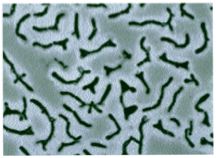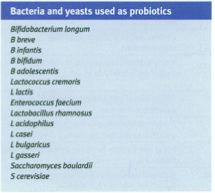Pond water: Difference between revisions
No edit summary |
|||
| Line 81: | Line 81: | ||
Carbon is an element in the world that is recycled over and over again. Carbon in the atmosphere is in the form of carbon dioxide. This gas is turned in to a usable form by pond plants, algae, photoautotropic bacteria, and other primary producers. Carbon is then passed from to organism to another during predation. Carbon is turned back into carbon dioxide by respiration and decomposition of organic organisms into the water and atmosphere | Carbon is an element in the world that is recycled over and over again. Carbon in the atmosphere is in the form of carbon dioxide. This gas is turned in to a usable form by pond plants, algae, photoautotropic bacteria, and other primary producers. Carbon is then passed from to organism to another during predation. Carbon is turned back into carbon dioxide by respiration and decomposition of organic organisms into the water and atmosphere | ||
Sulfur Cycle | Sulfur Cycle | ||
| Line 86: | Line 88: | ||
Sulfur is another important element to life. It is a major component ins proteins and vitamins in plants and animals. Sulfur deposits are found in the sediment of lakes and ponds from decomposing organisms and tied up rocks, salts, and metals. Sulfate reducers at the bottom of the pond break down these sources of sulfur so they can be used again by other organisms. Sulfide on the bottom of ponds and in surface water is turned oxidized by bacteria in to sulfate which then can be used by other animals and returned to the biomass circulation. | Sulfur is another important element to life. It is a major component ins proteins and vitamins in plants and animals. Sulfur deposits are found in the sediment of lakes and ponds from decomposing organisms and tied up rocks, salts, and metals. Sulfate reducers at the bottom of the pond break down these sources of sulfur so they can be used again by other organisms. Sulfide on the bottom of ponds and in surface water is turned oxidized by bacteria in to sulfate which then can be used by other animals and returned to the biomass circulation. | ||
==Current Research== | ==Current Research== | ||
Revision as of 14:53, 29 August 2008
Ayebaybay
Introduction
A pond is a body of freshwater smaller than a lake. Ponds are naturally formed by a depressions in the ground filling and retaining water. Streams or spring water usually fed in to these bodies. They are also be man-made ponds which can be created by damming a stream, digging a hole. Ponds are usually land locked and have no outflow. Because of this they are considered to be self contained ecosystems. This ecosystems are often teeming with rich vegetation and diverse orgamismal of life.
Description of Niche
Ponds can be very different from one another depending on their location and climates. Temperatures can vary from moderately warm in the summer to completely freezing over in the winter. Usually ponds have a pH of approximately 7 but can be as low as 6 and as high as 10 depending on many factors. Ponds with large populations of algae and other aquatic plants can change a pond's pH depending on the time of day. These organisms take up more dissolved carbon dioxide through photosynthesis during the day and and emit carbon dioxide at during the night though respiration. More carbon dioxide helps maintain pH at around 7 by dissociating in to bicarbonate ions. With a large organic demand for carbon dioxide, the bicarbonate ion concentration and thus buffering capacity of the pond can be significantly reduced and the risk of a rapid pH change increased. Composition of water is murky if it has a high amount of suspended particles and/or organisms. The bottom of a pond is usually sediment of sand, decaying matter and microorganisms. Pond water is usually stagnant. Nutrients are brought to the pond the streams that feed into it or run off during rain or snow melt off of the surround terrain. This washes in soil, animal waste, and decaying plant matter into the pond where they are broken down and used to fuel the ponds ecosystem. Many animals that live in the surround area, migrating birds, and near by plants depend on ponds for a rich source of nutrients and water.
Who lives there?
Ponds have a wide variety of microbial life. According to 2000 study, ponds have an average of 184.5 different types of microbes. Different levels of dissolved oxygen and light are present at different depths in the pond. This leads distinctly different niches from green algae and cyanobacteria on the surface to sulfate reducers and methanogens on the bottom.
Anabaena
These pearl shaped cyanobacteria are photoautotrophs. They can are able to synthesize their own sugars using carbon dioxide in the are and sunlight. They have been found to form sybiotic relationships with plants such as on the underside of Azolla ferns and other microorganisms. This bacteria is extremely valuable to the ponds ecosystem because of it's rare nitrogen fixing ablility. All organisms need a source of nitrogen to survive but very few can make their own from nitrogen gas in the air due to it's chemical structure. Anabanea can take dinitrogen and convert it in to ammonia which then can be used as a nitrogen source by other organisms. For this reason, they are often used in rice paddies to help fertilize the plants.
Rhodospirillum
This spiral shaped anoxygenic photosynthetic bacteria can live both in aerobic and anaerobic conditions. When in the presence of oxygen, Rodospirillum can suppress photosynthesis and becomes colorless. When in anaerobic conditions, it can become photosynthesis active by producing bateriocholorphylls and carotenoids proteins in it's membrane. Bacteriocholorphylls contains cholorphyll b, not cholorhyll a like in plants. This allows Rodospirillum to abosrob light with longer wavelengths. Carotenoids help the bacteria gather light energy for photosynthesis and give this bacteria a purple red color when in sunlight.
Chlorobium
This dark green bacteria lives strictly at the under the surface of the pond where no oxygen is present. Chlorobium is a spherical photolithotroph. This means it gets energy from the light and inorganic substance for biosynthesis. For this bacteria, the inorganic substance is hydrogen sulfide which is used as an electron source.
Sulfate is produced as a waste product which then can used by other organisms in the pond.
Desulfovibrio Desulfomonile tiedjei
These are both examples of sulfate reducers found in ponds. These microbs thrive in the decaying sediment at the bottom of the pond. They are anaerobic bacteria because they use sulfate as its electron acceptor instead of oxygen. They are know for their bioremdiation value because they can break down toxic pollutants and corrode metals by reducing them.
Methanogens
This is an extremely large and diverse group of organisms that include more than just bacteria but archea as well. These organisms produce methane, which is also known as swamp gas or natural gas, in anoxic conditions. These autotrophs are also found at the bottom of ponds where other reduction targets have be depleted (oxygen, nitrate, sulfate, etc.) Methanogens are important to the ponds ecosystems because they remove excess hydrogens and make use of fermentation products that have been formed by other forms of anaerobic respiration.
Alpha, Beta, Gamma Proteobacteria
Proteobacteria are another large group of bacteria. These negative gram cells are mostly anaerobic and heterotrophic and contribute a lot to decomposition of waste suspended in the water and deposited in the sedimentary floor. Proteobacteria flourish in eutrophic ponds and include phototrophs, pathogens, and fecal bacterial indicators of contaminated water. They can be found suspended in all layers of the pond. Fecal indicator bacteria are bacteria used to assess the quality of a water source. They are not necessarily disease causing but do have a high correlation with the presence of water-born disease causing organisms, such as bacteria, protozoa, amoebas, and other microbes. High concentrations above a specific limit would indicate a body f of water is unsafe for contact and a consumption due to waste water contamination. Alphaproteobacteria include most of the phototrophs. Some form symbiotic relationships with plants (eg. Rhodospirillum (see above)). Others are pathogenic and release toxins that are harmful to other pond organisms and animals if ingested. Betaproteobacteria include many waste water bacteria important for the break down of sewage and other chemicals. They also play a vial role for plants by fixing nitrogen to ammonium and to nitrite. Gammaproteobacteria are the group that are associated with bad water and sickness such as salmonella. E.coli and cholera. Vibro cholera is know for causing diarrhea if ingested and infect open wounds in swimmers. Cholera blooms occur during the summer when temperature and nutrients in the water increases and are known to survive for more than a year in biofilms.
Actinobacteria
Specialized in the break down of organic plant matter (chitin and cellulose), these bacteria are great contributors to the organic turn-over in the carbon cycle.
Which microbes are present?

Do the microbes that are present interact with each other?
Describe any negative (competition) or positive (symbiosis) behavior
Do the microbes change their environment?
Do they alter pH, attach to surfaces, secrete anything, etc. etc.
Do the microbes carry out any metabolism that affects their environment?
Nitrogen Cycle
All of Earth's living organisms need nitrogen to survive. About 78% of the Earth's atmosphere is nitrogen gas. Nitrogen in this state is unusable to to all but a small number of organisms. Nitrogen fixing bacteria and blue green algae that live in ponds and soil are responsible for changing nitrogen gas in to ammonia, which is compound plants are able to use. Some plants (legumes and ferns with anabaena) have formed a symbiotic relationship with these organisms. Next, nitrifying bacteria further change ammonia from nitrogen fixing bacteria and decaying organic matter in to nitrites and nitrates which are also taken up by plants and then animals. Nitrogen is returned to the atmosphere as gas from nitrates by denitrifying bacteria.
Carbon Cycle
Carbon is an element in the world that is recycled over and over again. Carbon in the atmosphere is in the form of carbon dioxide. This gas is turned in to a usable form by pond plants, algae, photoautotropic bacteria, and other primary producers. Carbon is then passed from to organism to another during predation. Carbon is turned back into carbon dioxide by respiration and decomposition of organic organisms into the water and atmosphere
Sulfur Cycle
Sulfur is another important element to life. It is a major component ins proteins and vitamins in plants and animals. Sulfur deposits are found in the sediment of lakes and ponds from decomposing organisms and tied up rocks, salts, and metals. Sulfate reducers at the bottom of the pond break down these sources of sulfur so they can be used again by other organisms. Sulfide on the bottom of ponds and in surface water is turned oxidized by bacteria in to sulfate which then can be used by other animals and returned to the biomass circulation.
Current Research
Enter summaries of the most recent research. You may find it more appropriate to include this as a subsection under several of your other sections rather than separately here at the end. You should include at least FOUR topics of research and summarize each in terms of the question being asked, the results so far, and the topics for future study. (more will be expected from larger groups than from smaller groups).
References
Edited by [Benjamin Dae Lee, Hilary Otorowski, Julia Son, Rebecca Son] students of Rachel Larsen

